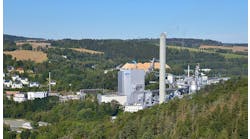| E |
thernet dominates commercial networking and industrial networks at the controller and HMI levels, but is Ethernet ready for plant floor and field level communications to instruments and sensors?
There are three main problems hindering implementation of plant and field level Ethernet: lack of determinism, poor topology and no power over wire.
Ethernet's lack of determinism is an old problem rapidly being solved by Ethernet advances. "New Ethernet installations are full-duplex, switched networks, says Larry O'Connell, a product manager with Cisco Systems. The typical error-rate performance in a full-duplex, switched Ethernet is typically 1 in 1012, far exceeding the performance metrics (typically 1 in 108) for factory networks, adds O'Connell.
"Full-duplex, switched Ethernet networks, which are prevalent today, are very deterministic. In fact, Ethernet surpasses the performance of many common proprietary solutions, continues O'Connell.
"If the price/performance ratio of Ethernet continues to improve, it may be feasible in the near future to implement a field-level Ethernet system with intelligent switches at each end device."
"If the price/performance ratio of Ethernet continues to improve, it may be feasible to implement a field-level Ethernet system with intelligent switches at each end device."
Although full-duplex, switched Ethernet networks are a marked improvement over half-duplex hub-based Ethernet networks, they do not address a network's ability to scale. As networks get very large, how do they scale in terms of traffic congestion, device management and bandwidth optimization?These issues are addressed using intelligent switching, a set of switch software features that allows the network to optimally manage its traffic. Most important in this feature set is Quality of Service (QoS). QoS allows the network to distinguish between different types of traffic and prioritize accordingly.Traffic types might include real-time process control data, performance monitoring data, heath diagnostics, alarms and others. QoS is key to keeping the network deterministic during unexpectedly high network loading conditions.Switches are equipped with data buffers to handle minor congestion; the buffer stores the data until it is ready to be transmitted. However, in a long-term congestion scenario, the buffer overflows, messages are dropped and must be retransmitted.How can the switch ensure that mission-critical data is always transmitted even in congested situations? QoS standards specify multiple queues, typically four. Each queue has a priority level that can be assigned to a particular type of data.First, the highest-priority queue is assigned to mission-critical traffic. Next, lower priorities are assigned to the other types of traffic. For example, the next-highest priority may be assigned to alarms, and a lower priority following that for performance monitoring and health diagnostics. The lowest priority queue is assigned to traffic that is not as time sensitive, such as e-mail.Intelligent switches with QoS coupled with full-duplex communications make Ethernet a deterministic network, but implementing such a system can be costly. Full-duplex communication can be implemented over CAT3 and above cabling, so cabling cost is not an issue with most existing and all new Ethernet installations. But it may not be economically feasible to install the required scores or even hundreds of ruggedized intelligent Ethernet switches throughout a process plant.Switches are needed for determinism, and they are also needed to implement a daisy-chain as opposed to a star topology. A star topology is ideal for most office Ethernet installations, but most process plants would much prefer a daisy-chain topology. Fieldbuses designed for process plants use daisy-chain topologies, but the only way to implement Ethernet in a daisy-chain configuration is to install switches at each device. This is impractical today, but may be a workable solution in the near future.According to Carl Staffan Dahlstrom, executive VP of HMS Industrial Networks, next generation ProfiNet (and other) Ethernet networks could integrate a 4-port Ethernet switch into each end device, enabling a combination of star and daisy chain installations. This solution is now becoming feasible because of the low and declining cost of Ethernet hardware. Siemens is currently developing new silicon for this application, expected to reach the market in 2005 and further lowering costs, adds Dahlstrom.If the price/performance ratio of Ethernet continues to improve, it may be feasible in the near future to implement a field-level Ethernet system with intelligent switches at each end device. This would solve both the determinism and the topology problem. Al that would be left at that point to make Ethernet competitive with field level networks would be to provide power over wire.Despite the ubiquity of Ethernet in commercial installations and despite its rapidly declining costs, it appears that existing field bus solutions will continue to lead for at least the next few years.



